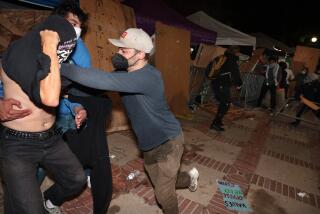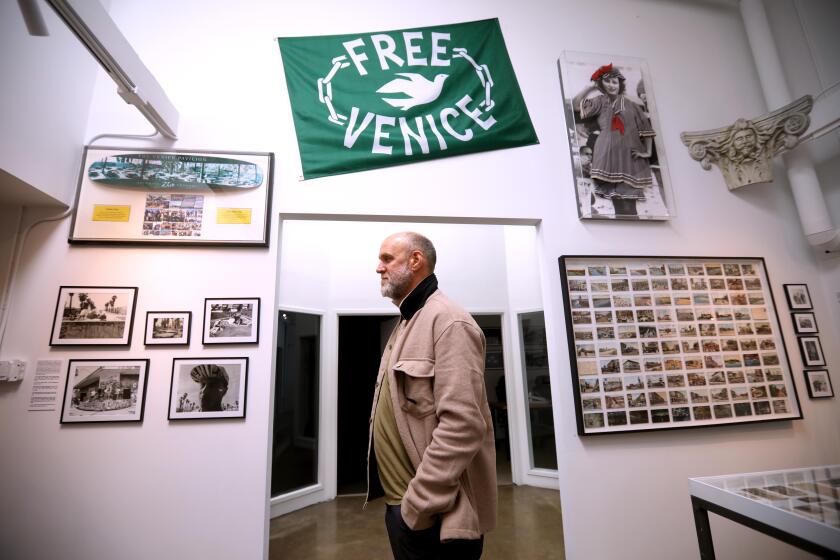DMV Tips Steer Refugees on Right Path
Thuy Nguyen was born during the depths of the Vietnam War, reared in a land of unrest and squalor. She ultimately fled the Communist-held country with her family, arriving in the United States just a few months ago and settling in Santa Ana.
Now the 24-year-old immigrant faces a challenge nearly as daunting to her as the struggles in her homeland. She is learning to drive a car.
Through war and revolution, Nguyen never had an opportunity to turn an ignition key. And it shows. Though eager to get a driver’s license, the bespectacled refugee admits to having some qualms when she straps on a seat belt and grips the steering wheel.
“Driving a car is very difficult,” Nguyen said one recent day in halting English. “I am afraid of freeways. Too fast. Very fast.”
Nguyen’s anxiety over encountering the highways and byways of America is hardly unique. Driving a car on the traffic-choked roads and freeways of Orange County can be trying for even the most steely nerved native, but for recent arrivals from places like Vietnam, Laos and Cambodia, it can be a nightmare.
Hoping to help such immigrants, the state Department of Motor Vehicles has begun a special effort to lower the language barriers and to better teach foreign newcomers on the laws and nuances of the highway.
Dubbed the “cultural outreach program,” it features a series of videotapes and booklets in nearly a dozen languages covering a variety of topics, including basic rules of the road, the necessity of buying insurance, the evils of drunk driving, what to do if an accident occurs and how to negotiate the twists and turns of a DMV office.
“Some of these people literally stepped out of the 18th Century and into the 20th Century when they came here,” said Gary Quinliven, the program’s coordinator. “Many of them have no idea of the rules of the road. Some have not even seen a car, at least never on the scale as we have it here.”
Although the program began in late 1989, DMV officials estimate it has already helped more than 1 million people in the state. A dozen other states, including New York, are studying the California program to determine if they should launch similar efforts.
About 50 school districts in California use the video series in courses for newcomers. Among them is the Los Angeles Unified School District, which shows the tapes in nearly 400 English language classes.
The series is also regularly aired in English and foreign-language versions by about 100 cable TV outlets in California and five Spanish-speaking commercial TV stations, DMV officials say. In addition, the tapes have been played at several refugee centers in Thailand and the Philippines for immigrants destined for the United States.
While the program initially focused on Southeast Asian languages, it was later expanded to include Spanish, two Armenian tongues, and Mandarin, Cantonese and Tagalog (the language of the Philippines).
“These people have a different language than we have, they’re trying to learn how to get a job, get a place to live, how to shop in our markets, how to get along in our world,” Quinliven said. “What we wanted to do was make it as easy as possible to get into the world of driving a car.”
Indeed, there exists a fundamental urgency for many of the newcomers to get a driver’s license. With its sprawling suburbs and dearth of public transportation, Southern California can represent an imposing challenge for a newcomer without a car.
“Learning to drive is very important for refugees,” said Loc Ba Nguyen, refugee coordinator for the Vietnamese Community of Orange County Inc. “They know they need a car. Orange County is very limited as far as public transportation, so everyone wants to have a car.”
But the very act of driving can pose an awkward adjustment for immigrants. Adults who have never commanded a car must learn a whole new system of eye and muscle coordination. Newcomers from crowded foreign cities, meanwhile, sometimes import motoring habits hardly in line with the California Vehicle Code.
“Many of these people just don’t have a lot of experience driving,” said Lt. Michael Schliskey, police traffic commander in Westminster, which has a sizable Vietnamese population.
Although the DMV is reluctant to break down motorist information along ethnic lines, Schliskey said studies by his department indicate that in recent years nearly three of four accidents in the city involve refugees from Indochina. The bulk of those, he said, are in the Little Saigon section of Westminster.
No one knows the foibles and fears of such refugee drivers quite as well as Michael Vo Duc Minh. Owner of the Little Saigon Traffic School and an auto insurance agency, Vo deals firsthand with many of the problems of the immigrant motorist.
“It just takes time for them to adjust,” said Vo, who came to the United States in 1980 and started his traffic school last summer. “It’s not that the laws are all that much different, it’s just that people’s attitudes are different.”
In Vietnam, for instance, many motorists would routinely start through a red light when the signal on a cross street turns yellow, he said. Such a practice in the United States promises only to result in the refugee driver running afoul of the law--or running into another car.
Vo said his classes, which are held in Vietnamese and serve people trying to work traffic citations off their driving record, typically end up becoming sessions on rudimentary rules of the road. “Basically, we teach people from A to Z about traffic law,” he said.
As part of the sessions, which have been attended by more than 1,500 people, he regularly uses the videotapes and booklets provided by the DMV.
“I like the program,” Vo said. “It reviews all the basic law that people need to know and it’s done beautifully in their own language.” His only complaint is that the translator has an accent “from the extreme north” of Vietnam, making it sound akin to “doing a Texas accent for an instructional tape that’s shown in New York.”
Likewise, Loc Ba Nguyen has found the DMV videos helpful for refugee seminars at the Vietnamese Community of Orange County. But he said the program is not nearly intensive enough for people who are driving for the first time.
Many newcomers, he said, end up trying to learn the mechanics of driving a car from friends who arrived before them, and the friends are typically ill-equipped to serve as instructors.
Phong Nguyen, 24, knows the trials and tribulations of a driving test. He came to the United States earlier this year with his mother and immediately set about trying to get his license, taking lessons from a private instructor for $15 an hour.
The written test was “no problem,” he said, but the road test proved more difficult. He flunked three times, but the fourth proved a charm. Two weeks ago, Nguyen scored a 78% and got his license.
“It is very important to have my license to find a job in the future,” Nguyen said through a translator. “I feel joyful and happy to have my license.”
More to Read
Start your day right
Sign up for Essential California for news, features and recommendations from the L.A. Times and beyond in your inbox six days a week.
You may occasionally receive promotional content from the Los Angeles Times.






